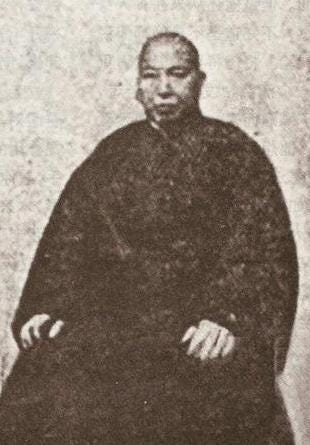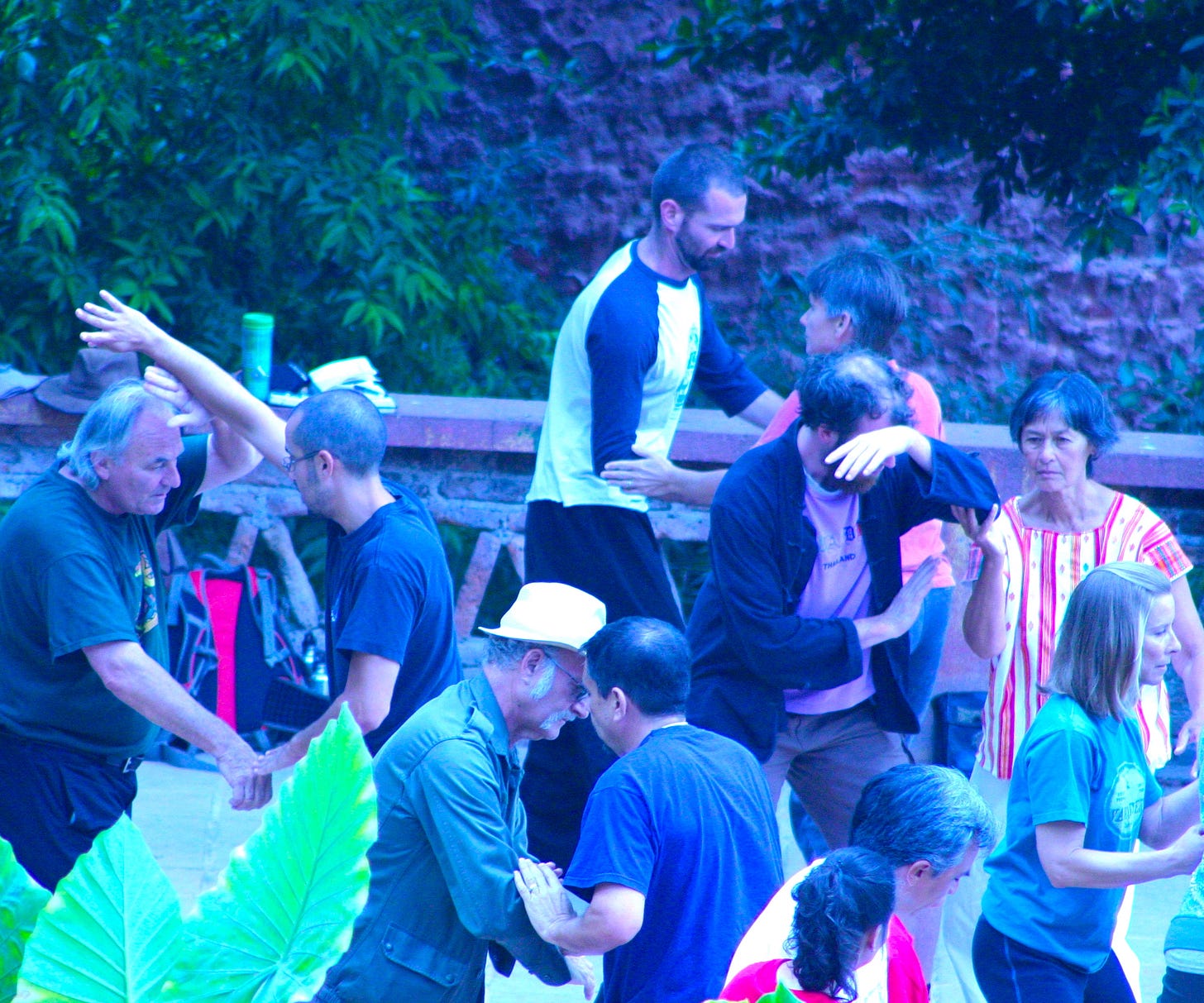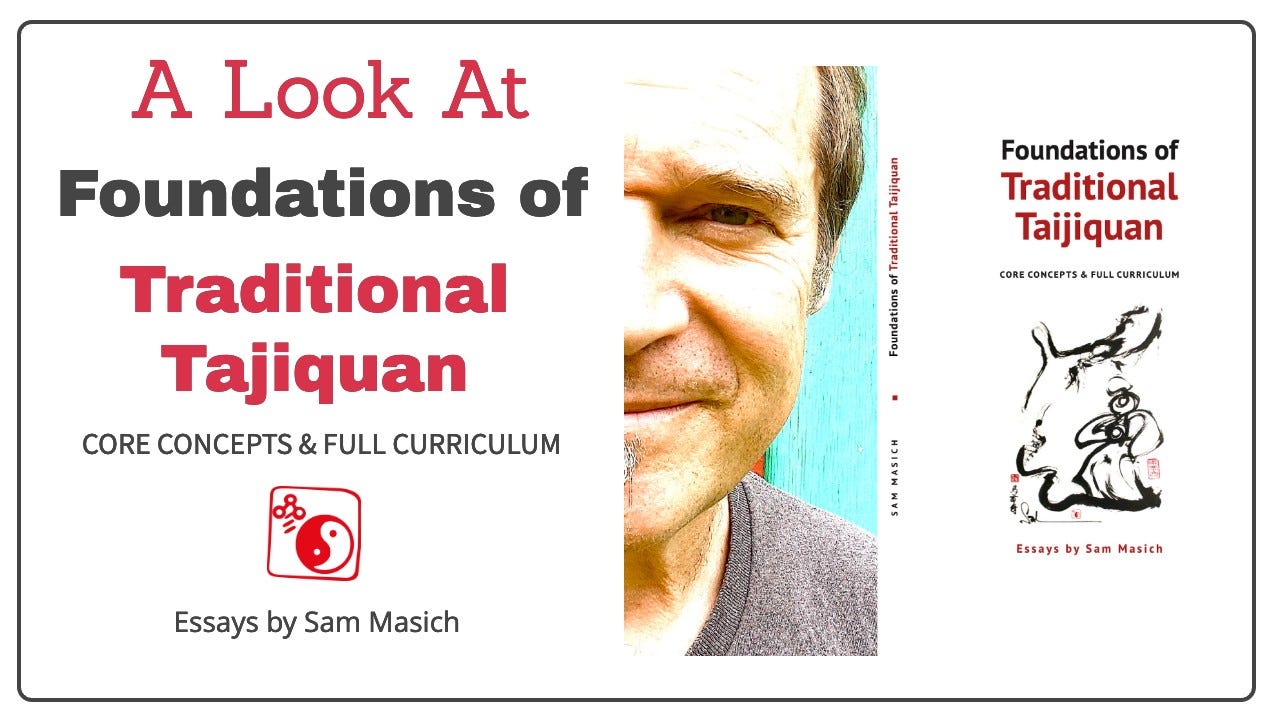Yang Style Taiji Sanshou (The '88')
New Translation of Chen Yanlin's Introduction and Reference List
The Yang-style Taiji Sanshou partner form (楊式太極散手), an eighty-eight movement taiji-sparring sequence, is also known as ‘the paired-hitting form,’ ʻthe attack-and-defendʼ or simply ‘the eighty-eight.ʼ Variations of the routine can be found throughout Asia and around the world. Most iterations derive from the version found in Chen Yanlinʼs 1943 manual ‘Taiji Boxing, Sabre, Sword, Pole, Sparring Compiled’ (Taiji Quan, Dao, Jian, Gun, Sanshou Hebian 陳炎林 太極拳刀劍桿散手) which illustrates the form as taught by Yang-family disciple Tian Zhaolin (田兆麟 1891–1960). In mainland China, the attack-and-defend is probably best known in Shanghai where Chen Yanlin (陳炎林; 1906-1980) made his home until his death in 1980. The routine is better known in Taiwan where stylistic interpretations abound.
In the Masich Internal Arts Method the ‘eighty-eight’ sparring’ form is taught along with:
Yang Chengfu’s 37 essential form applications (Yang-Chengfu sanshiqi danshi lianfa 楊澄甫的三十七單式練法)
Taiji linking fist methods (taiji lianhuan quanfa 太極连环拳法)
The ‘Wheel of Applications’
To follow are my translation of Chen Yanlin’s introduction to the ‘Sanshou Paired Hitting’ form as well as my teaching list with movement key for the routine.

Taiji Sanshou Paired Hitting (太極散手對打 Taiji Sanshou Duida)
Introduction to the form by Chen Yanlin (1943)
Sanshou (散手) is one of the central practices in taijiquan (太極拳) and, as well, is a remarkable form of gongfu (功夫). It can augment the areas in which push-hands (tuishou 推手) and ‘large rolling’ (dalü 大履) are lacking. If someone tends to lose connection when practicing tuishou and dalü or if sticking-adhering energy (zhan-nian jin 粘黏勁) in ‘warding energy’ (peng jin 掤勁) is insufficient then the sanshou routine is valuable.
This sparring set found at the centre of taijiquan is not the same as in other martial-art styles: it is based on: ‘sticking, adhering, connecting, and following’ (zhan, nian, lian, sui 粘黏連隨), letting go to respond to the other, internal energy, and continuous, ongoing transforming and emitting. As with tuishou and dalü, regardless of the specific technique, it is the always same—there is ‘neutralizing’ (hua 化) and ‘issuing’ (fa 發) in everything. Beyond expectation and yet natural it is entirely based on prioritizing the legs and waist—without stiffness, exertion, or strain, but rather, going along with the movement.
Once tuishou and dalü are at a more advanced level the sanshou applications should be studied. Otherwise, one stops short nine-tenths of the way to the myriad possibilities—one basket shy of completion. Such a pity!

Taiji sanshou is divided into two categories: solo practice and partner practice. There are many solo-practice techniques including use of: the palm, the fist, the wrist, the elbow, the shoulder, the waist, the hip, the knee, and the foot. (These nine parts can be used continuously, part-by-part, to efficiently issue against someone.)
In the typical boxing framework there is one expression of power for each technique. This is adequate for solo training, practical application, internal-force training, and qi-circulation methods—but beyond this, the transmission of an accomplished master is needed. Partner training involves connecting the entire set observing the 'thirteen-powers boxing' (shisanshi 十三勢拳) framework at the heart of each form. Each one is revealed according to martial application, mutually consistency, and harmony within the Sanshou Paired-hitting set.

The composition of the set can be described as 'perfection itself.' Ever-changing, extremely subtle—it is a true martial-arts masterpiece! A person educated in this complete routine has attained ‘upper’ and ‘lower’ hand forms and can practically apply them. As a result, solo-routine postures will be precise and a pleasure to behold and, furthermore, attention to 'perception' will be enriched as the mind-body connection intensifies.
I'm afraid that words are not sufficient to describe this. In tuishou and dalü practice ability to receive an attacker's force is increased as well as the ability to unpredictably defeat an opponent. What is at the heart of taijiquan will become clear. The rarest of learners will not disregard this.
散手在太極拳中。亦為重要功夫之一。能補助推手與大捋之不足。凡在推手或大捋時。如人手易丢。 或無沾黏掤化諸勁。則散手尚焉。太極拳中之散手。 完全與他派不同。其沾黏連隨。捨己從人。內勁化發。綿綿不斷。一如推手大捋。勿論一手或一式。均有化有發。出乎自然。全以腰腿為主。而無硬施強行等動作。學者練習推手大捋至相當程度後。則散手之應用。萬不可不研究。否則如九仞之崇。所欠一 簣。豈不惜哉。太極散手。分單人練習與雙人練習二 種。單人練習。方式甚多。或用掌。或用拳。或用腕。 或用肘。或用肩。或用腰。或用胯。或用膝。或用足。(共九節。節節能發人。) 凡拳架中任何一勢一手。 皆可單練。惟姿勢、應用、內勁、及運氣等法。則非由名師傳授不可。雙人練習。係將全套十三勢拳架中各式。一一拆開。隨每手用法。互相聯貫。合成散手對打。其間接連之處。可謂天衣無縫。千變萬化。奧妙無窮。誠拳中之傑作也。學者如能將其全套上下手各式熟記。並能應用。則在單人盤架子時。姿勢卽能準確美觀。而興趣愈覺濃厚。心身獲益。恐非筆墨所能形容。至推手大捋時。更可左右逢迎。出奇制勝。實為太極拳中之結晶。希學者切勿漠視之。
Sam Masich and Matthew Case practicing the ‘eighty-eight’ on Daqingshan Mountain, Shandong, China (2017)
In Yang-style Taijiquan circles, it is commonly believed that Yang Jianhou taught practices to his disciple Tian Zhaolin (including the eighty-eight taiji sanshou and the taiji baduanjin) that some family members did not learn. Tian Zhaolin studied from Yang Jianhou since youth and trained with the master until his death in 1917.
Members of the Tian family have continued walking in Tian Zhaolin’s footsteps. His son, Tian Yingjia (田英嘉; 1931–2008) had hundreds of students during his lifetime and accepted about fifty disciples.
Chen Yanlin’s manual Taiji Boxing, Sabre, Sword, Pole, Sparring Compiled is somewhat controversial because Chen left his teacher/collaborator Tian Zhaolin uncredited.

To follow is a reference list for the Yang-style Taijiquan Sanshou form
This list differs somewhat from the literal translation of Chen Yanlinʼs own names for the movements in several ways: 1) Use of the somewhat repetitive and cumbersome ʻshiʼ, (式; ʻformʼ or ʻstyleʼ) is omitted from terms such as right ʻstyleʼ when referring to a direction. 2) Use of the terms ʻleftʼ and ʻrightʼ are changed to (l) and (r) after the name of a movement (See ʻKeyʼ below). Translations of form names such as ʻBend Bow, Shoot Tigerʼ are translated so as to correspond with the Yang Style Taijiquan (108) routine as translated by the author. Other minor descriptives have been altered, omitted or added where clarity was served.
Key:
Designation of the final foot forward in the posture is given for each move. e.g. (rf)
(r) & (rh): ‘right’ hand or arm
(l) & (lh): ‘left’ hand or arm
(f): ‘foot’ or ‘knee’ [e.g. (lf): ‘left foot’]
(-o): ‘opponent’s’ [e.g. (r-o) means ‘opponents right’ arm or leg]
Ch. step: ‘change step’ [e.g. Ch. step, (lf) means; from a right foot forward position the right foot has stepped and the left foot has replaced it as forward leg.









